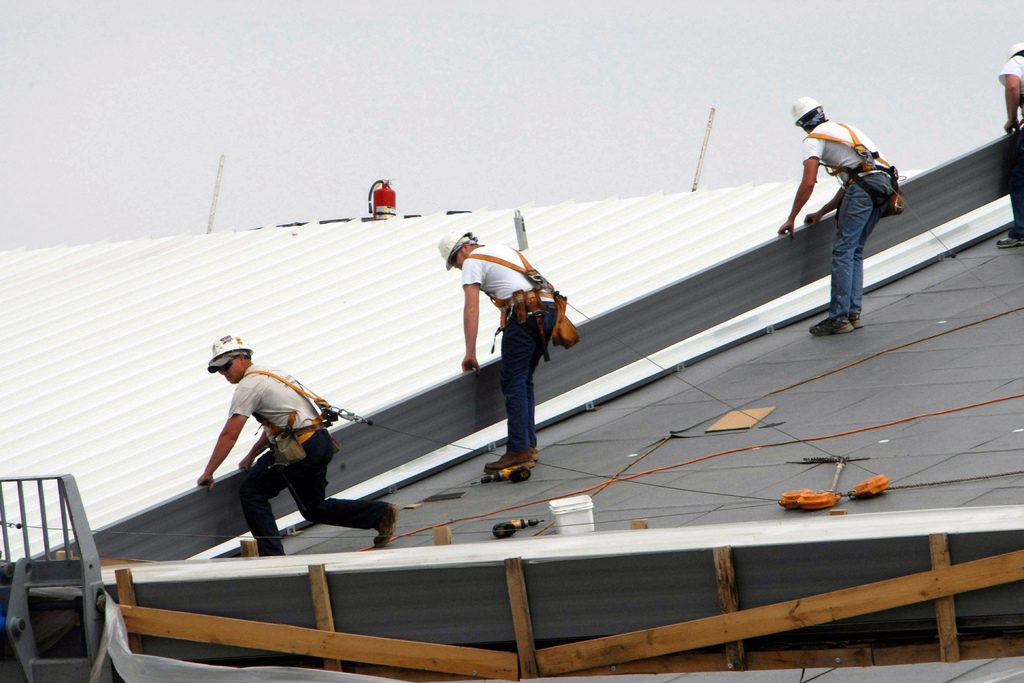Hire a certified Roofer for top-notch roof installation.
Hire a certified Roofer for top-notch roof installation.
Blog Article
How to Evaluate Various Roofing Options for Your Building Requirements
Examining roof options for your structure needs a comprehensive method that takes into consideration various elements such as the meant use of the structure, local climate conditions, and product qualities. It is vital to weigh the benefits and disadvantages of different roof covering types, from asphalt roof shingles to metal and clay tiles, while also considering first costs and long-lasting upkeep. Additionally, understanding energy effectiveness and aesthetic charm can affect your choice. As you consider these factors to consider, one question continues to be: which variables will eventually lead your option for a sustainable and aesthetically pleasing roof covering service?
Evaluating Your Structure's Needs
To properly examine roof covering choices, begin by completely assessing your structure's requirements. Start by thinking about the structure's intended usage, as different structures might require differing roofing specs. Household roof coverings often prioritize appearances and insulation, while commercial structures might concentrate on longevity and load-bearing capacity.
Following, examine the local climate problems that will certainly influence roofing efficiency. Aspects such as temperature level variations, rainfall degrees, and wind patterns can affect material choice and style. A roof covering system that masters a pleasant environment may not carry out too in locations vulnerable to heavy snowfall or severe heat.
Additionally, analyze the architectural integrity of your structure. Make certain that the existing structure can sustain the chosen roofing materials, particularly if thinking about heavier choices. It is likewise vital to review any type of neighborhood building regulations or guidelines that might dictate certain demands for roofing systems.

Contrasting Roofing Products
Once an extensive assessment of your building's requirements has been completed, the next step involves comparing various roofing materials. Each product supplies unique advantages and drawbacks, making it vital to align your option with your specific demands and conditions.
Asphalt tiles are extensively identified for their price and simplicity of setup, making them a popular choice for property buildings. On the other hand, metal roofing, recognized for its longevity and durability, can stand up to extreme climate condition yet may include a higher initial financial investment.
Clay and concrete ceramic tiles provide superb thermal insulation and visual charm, particularly for Mediterranean-style architecture, yet they need an even more robust architectural support because of their weight. Wood trembles offer an all-natural appearance and excellent insulation residential properties but may require much more upkeep and are prone to fire threats.
Reviewing Cost and Budget Plan
Examining your roofing alternatives necessitates a cautious assessment of price and budget plan considerations. The general allocate a roof job comprises numerous variables, consisting of material costs, labor expenditures, upkeep, and potential long-lasting cost savings. It is important to establish a clear budget prior to checking out certain roof covering materials, as this will guide the decision-making procedure and aid you avoid overspending.
Begin by acquiring quotes from multiple professionals to recognize labor prices in your region. Guarantee that these price quotes include all required services, such as elimination of the old roof, setup, and any extra attributes, like insulation or air flow enhancements - Perrysburg Roofer. Next, assess the cost of different roof covering products, considering both initial installation costs and anticipated lifespan

Recognizing Energy Efficiency
Power effectiveness plays a crucial role in the selection of roofing materials and systems, considerably impacting both energy intake and overall comfort within a building. A well-chosen roof covering can enhance thermal performance, reducing the requirement for home heating and cooling down systems, which in turn lowers energy bills and decreases environmental impact.
When evaluating roof choices, take into consideration products that mirror instead of take in warm. Light-colored or reflective roof items can substantially lower roof covering surface area temperatures, resulting in lower energy usage throughout hot months. Furthermore, proper insulation and ventilation are crucial to optimize the power performance of the entire roof system. Insulation prevents warmth transfer, while air flow reduces warm buildup in the attic room.
One more important aspect is the roof's long life and maintenance needs. Long lasting products that require less regular substitute contribute to long-lasting energy cost savings. The energy efficiency of a roofing system can additionally be examined via its conformity with well-known sustainability rankings such as Power CELEBRITY or LEED.
Taking Into Consideration Aesthetic Charm
A roofing's visual allure dramatically affects the total look of a building, complementing its building design and enhancing curb appeal. Roofer. When examining roof alternatives, it is important to consider exactly how the link picked material, shade, and layout will integrate with the existing structure and neighborhood. A properly designed roof can raise also the most basic of buildings, changing them right into aesthetic prime focus
Different roofing materials use numerous visual high qualities. Traditional roof shingles might stimulate a traditional appeal, while metal roof can impart a contemporary, sleek look. Additionally, the shade of the roof product plays a critical role; lighter shades can make a building appear even more large, while darker tones might develop a cozier setting.
In addition, building aspects, such as dormers and eaves, can boost the roofing's visual impact. It is advisable to talk to expert designers or engineers to ensure the selected roofing alternative lines up with the general design intent. Ultimately, a roof needs to not just provide practical advantages but likewise add positively to the building's aesthetic, showing the proprietor's taste and the personality of the surrounding atmosphere.
Verdict

Report this page